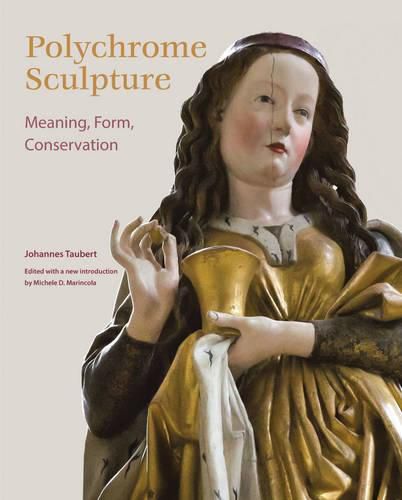Readings Newsletter
Become a Readings Member to make your shopping experience even easier.
Sign in or sign up for free!
You’re not far away from qualifying for FREE standard shipping within Australia
You’ve qualified for FREE standard shipping within Australia
The cart is loading…






In the decades since its initial publication in German in 1978, Polychrome Sculpture has come to be widely regarded as a watershed text on the making and meaning of European medieval and Baroque painted wood sculpture. An early proponent of interdisciplinary research, Johannes Taubert played a pioneering role in combining the rigorous scientific analysis of materials with a fuller understanding of form and function, an approach that has led to the development of technical art history as practiced today.
Many of the essays in this volume apply such scientific techniques as microscopic analysis to an art-historical understanding of Romanesque and late Gothic wood sculpture, revealing that, far from serving a merely decorative function, the painted surface of these works was intricately connected to their meaning. The paint layers on the sculptures, for example, which the author spent years documenting through close examination and analysis, were intended to impart a heightened sense of reality to the life-sized sculptures, thereby enhancing the viewer’s experience of worship. Taubert believed it was crucial for conservators to understand this context before undertaking any treatments. No other book offers such a focused, subtle, and interdisciplinary examination of the subject as Polychrome Sculpture.
This influential work is now available in English for the first time, in a meticulous translation enhanced and updated by new color illustrations, annotations to the original text, and a new introduction.
$9.00 standard shipping within Australia
FREE standard shipping within Australia for orders over $100.00
Express & International shipping calculated at checkout
In the decades since its initial publication in German in 1978, Polychrome Sculpture has come to be widely regarded as a watershed text on the making and meaning of European medieval and Baroque painted wood sculpture. An early proponent of interdisciplinary research, Johannes Taubert played a pioneering role in combining the rigorous scientific analysis of materials with a fuller understanding of form and function, an approach that has led to the development of technical art history as practiced today.
Many of the essays in this volume apply such scientific techniques as microscopic analysis to an art-historical understanding of Romanesque and late Gothic wood sculpture, revealing that, far from serving a merely decorative function, the painted surface of these works was intricately connected to their meaning. The paint layers on the sculptures, for example, which the author spent years documenting through close examination and analysis, were intended to impart a heightened sense of reality to the life-sized sculptures, thereby enhancing the viewer’s experience of worship. Taubert believed it was crucial for conservators to understand this context before undertaking any treatments. No other book offers such a focused, subtle, and interdisciplinary examination of the subject as Polychrome Sculpture.
This influential work is now available in English for the first time, in a meticulous translation enhanced and updated by new color illustrations, annotations to the original text, and a new introduction.